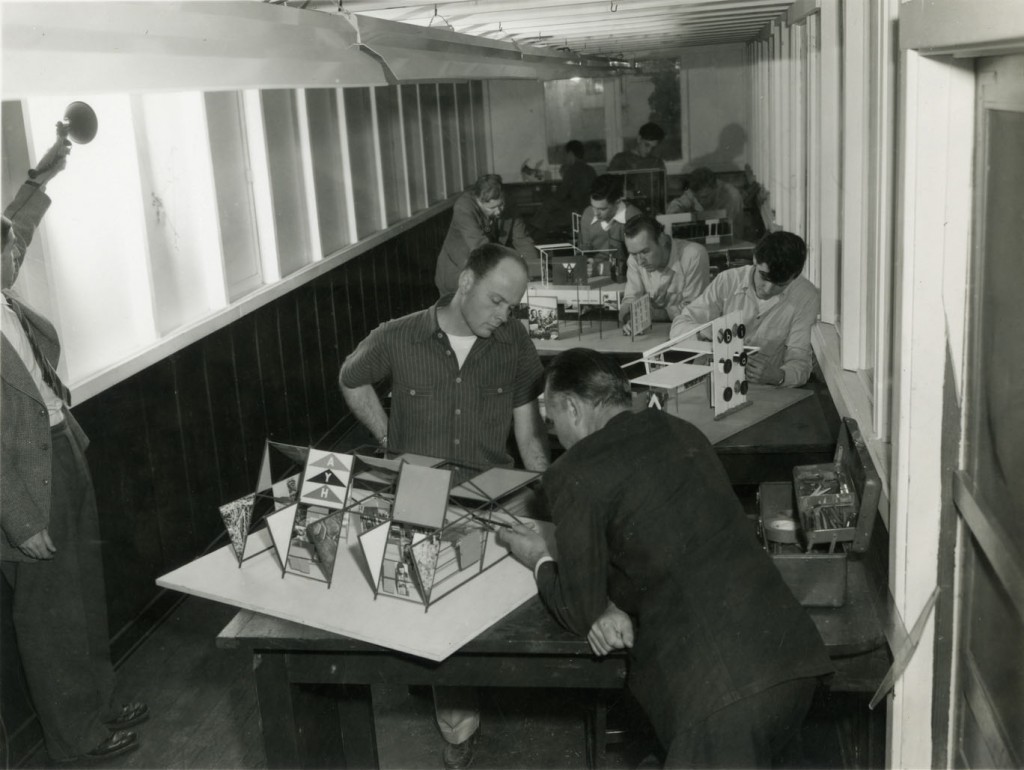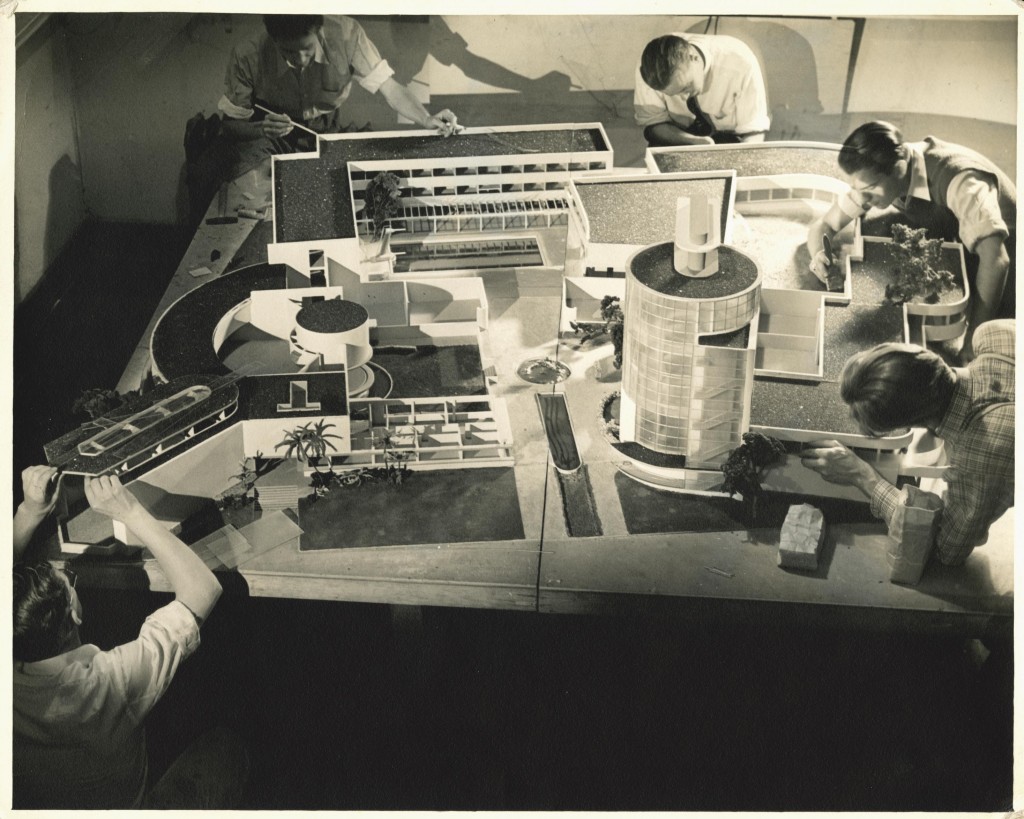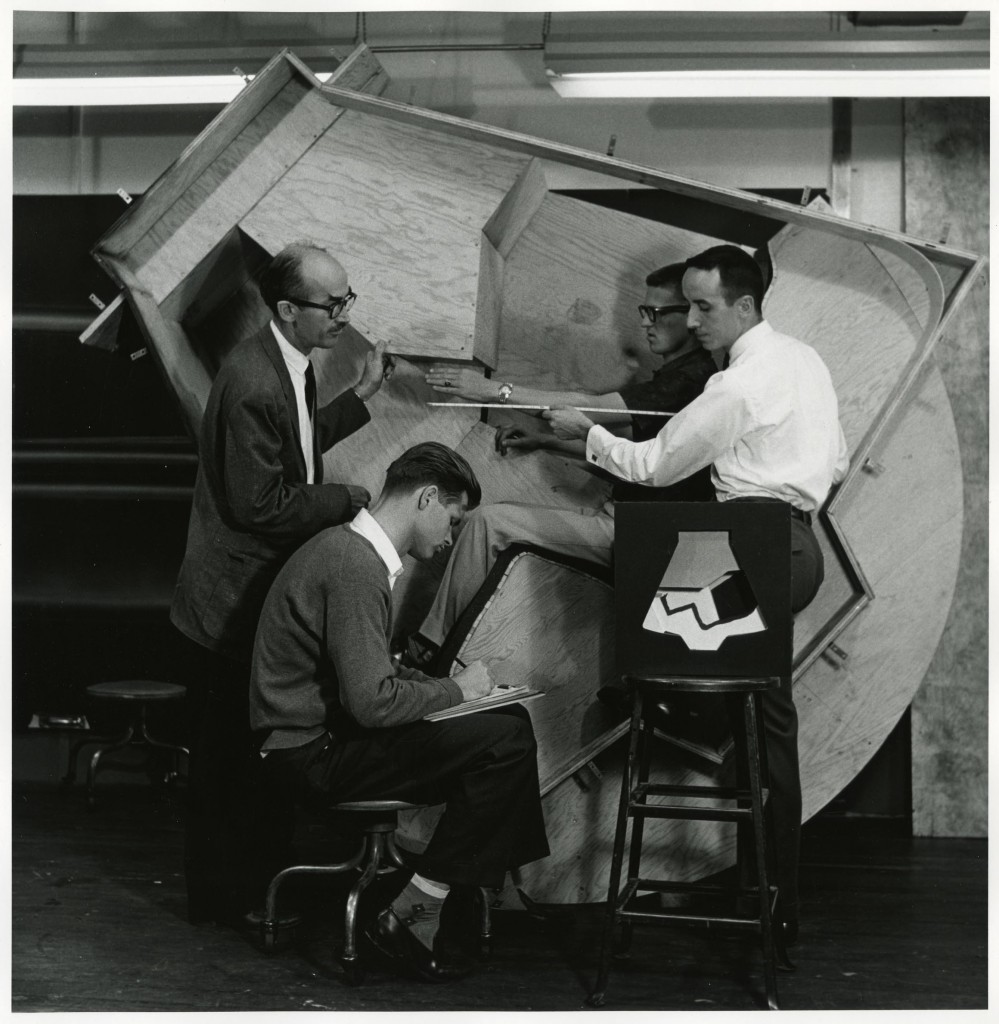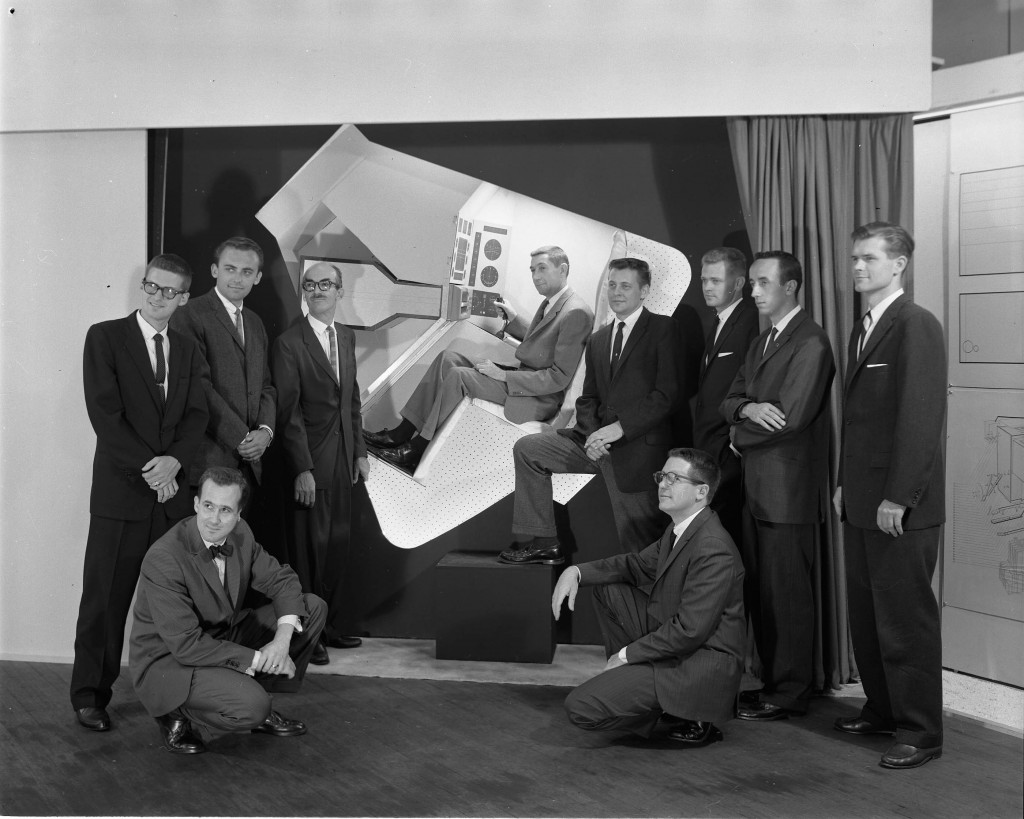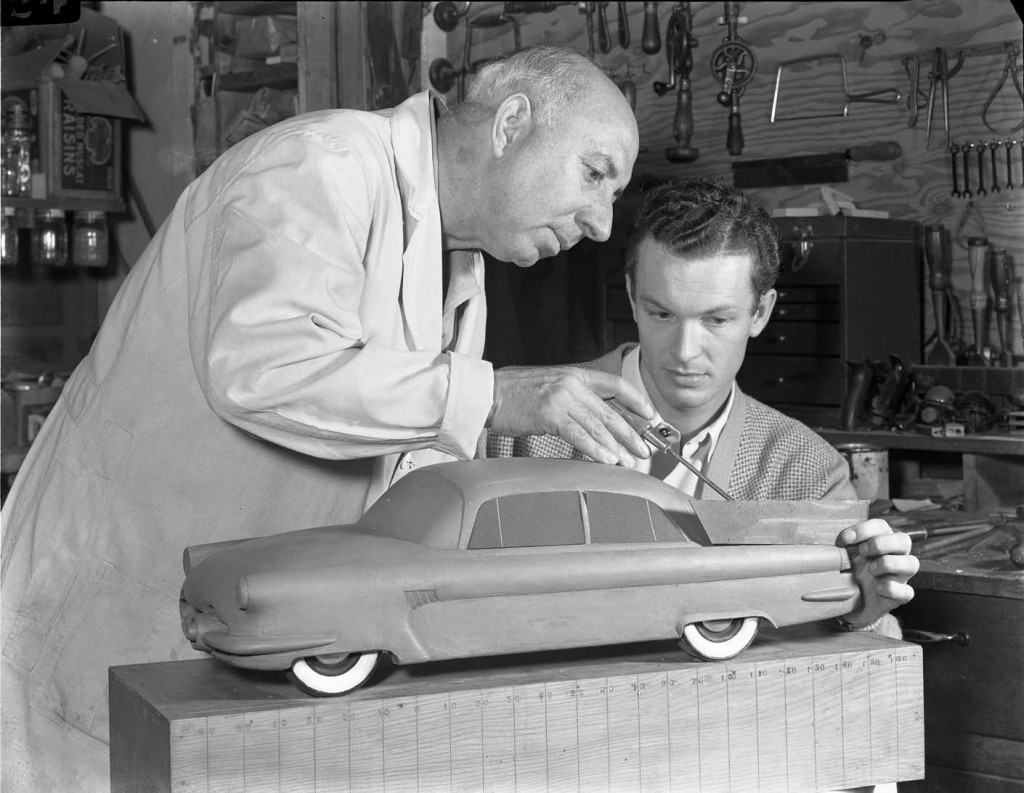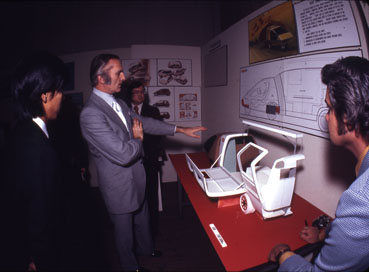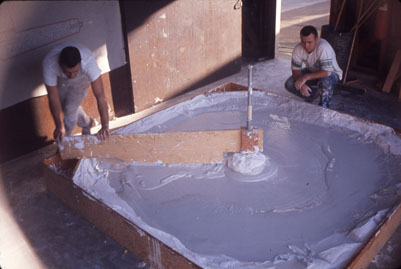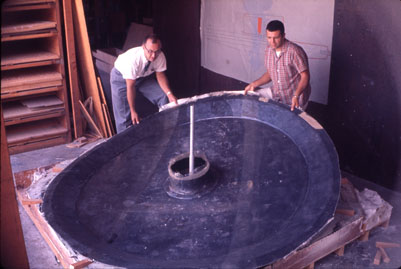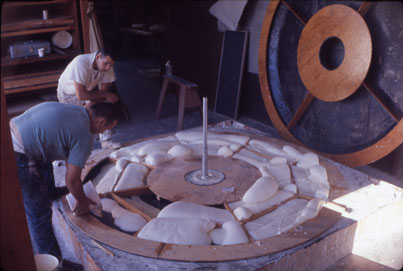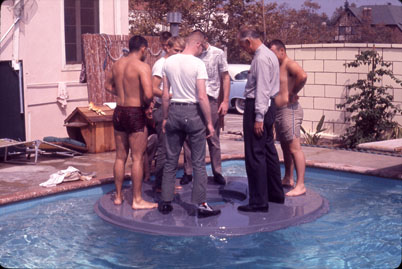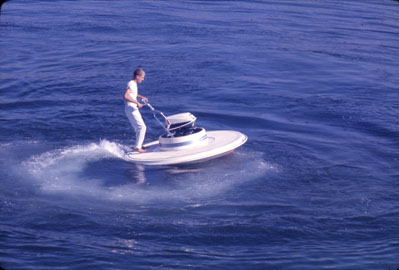Home » 2014
Yearly Archives: 2014
Environmental Design
There have been classes in environmental design since the Industrial Design department was formed in 1931. Art Center did not start using the term “environmental design” until the early 1970s, but instead used terms like “interior space design,” design for merchandising,” and “specialized structures.” Today our Environmental Design Department describes the program as “focus[ing] on the design of the total spatial experience—from the first moment of encounter to the last moment of interaction.” Below are some early photographs from classes in environmental design.
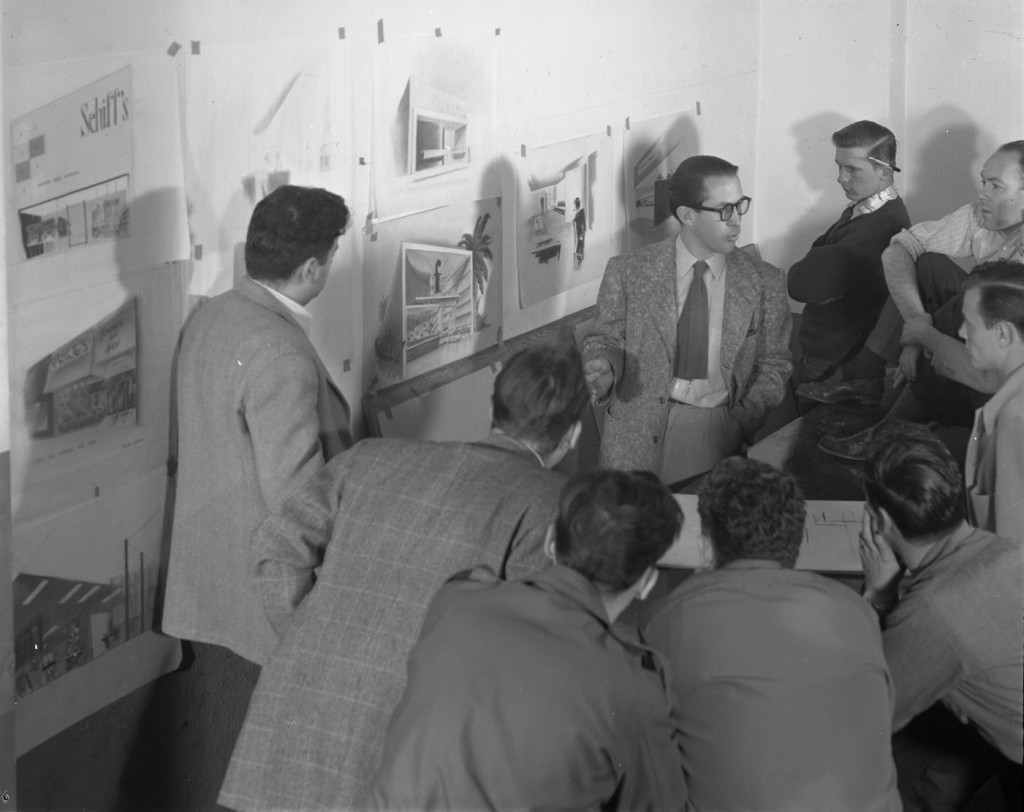
Sterling Leach instructing a group of students, circa 1949. (2004.20.605). Art Center College of Design.
General Electric Space Capsule project, 1960
Art Center’s very first sponsored project in 1960 was not to design an automobile or even an industrial design product, but rather a space capsule. George Beck, manager of industrial design at General Electric’s Light Military Electronics Department, approached Art Center with the idea for students to design a space capsule and interior computer, providing for the most efficient relation between the computer and the pilot.
Below are some photos from the project.
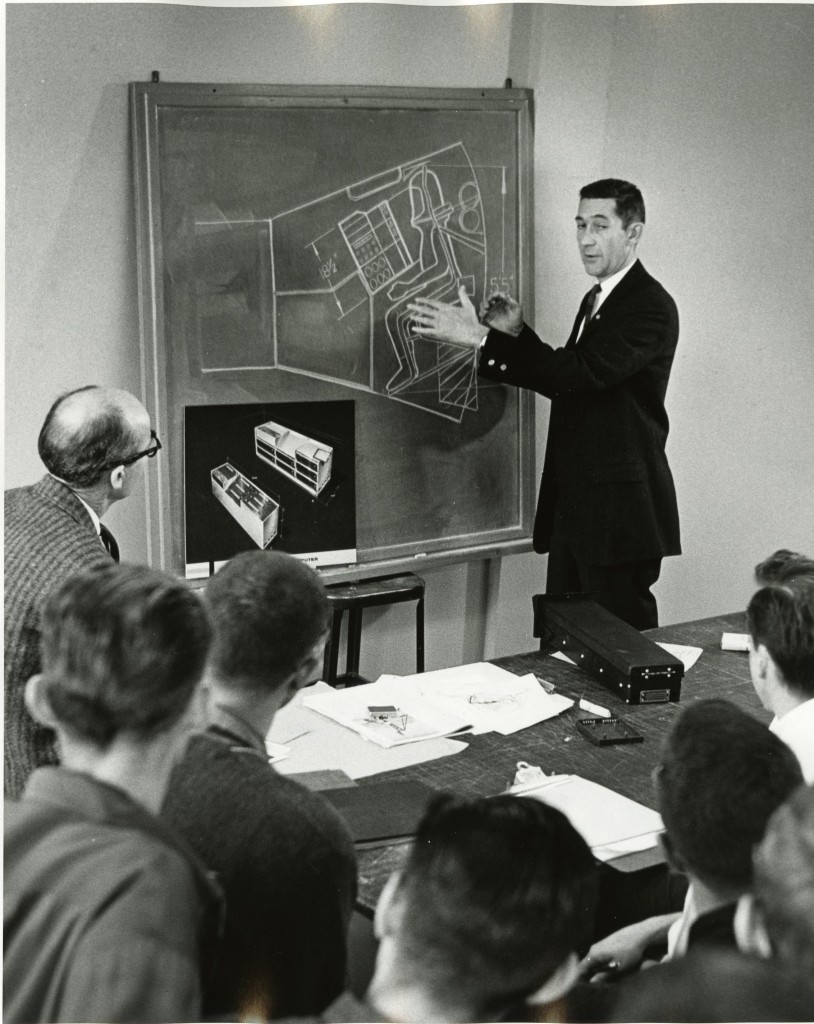
George Beck, of General Electric, giving GE Space Capsule Project assignment to students, 1960. (2004.22.2200.W). Photography by Geoffrey Fulton. Art Center College of Design.
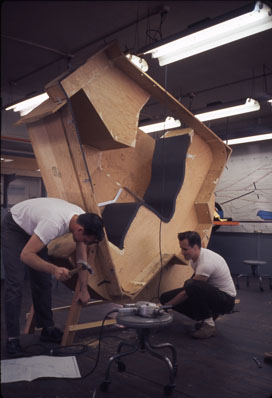
General Electric Space Capsule project, 1960 (2004.22.211). Photography by Geoffrey Fulton. Art Center College of Design.
Early Transportation Design
The first Art Center graduates to enter the automobile design field were placed in positions with General Motor Buick Division in Detroit, Michigan, as early as the mid-1930s. A few industrial design students, including John Coleman, George Jergenson and Strother MacMinn, were fascinated by automobile styling in an era when U.S. mass production car design was still rather primitive. In 1948, MacMinn, Coleman, and Jergenson joined the Industrial Design Department and established the schools’ connection with transportation design–a field that lifted Art Center into international prominence.
Below are some early photographs from circa 1949 of students working on transportation design projects.

A student completes a color sketch prior to modeling in clay, circa 1949. Art Center College of Design.
General Motors Irvine Project, 1971
Senior design executives from General Motors Corporation challenged a class of advanced transportation students with the design of a total community transportation system projected for the year 1990. The students chose the master-planned 85,000 acre city and community of Irvine in Orange County, California. The problem involved the design of a balanced, integrated system of public, private, emergency, and service vehicles, to meet the needs of half a million people with a wide range of life styles and incomes. The system needed to be attractive, convenient, economical and efficient, and take into account all potential developments in technology, safety and ecological standards.
Below are a few examples of the photo documentation from the project.
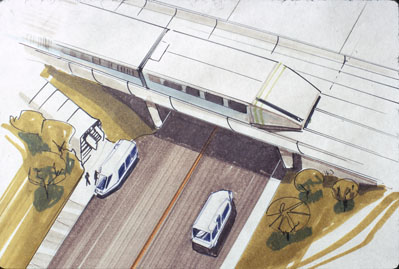
GM Irvine Project, 1971. Student drawing of The Wedge on a ramp with the Irvibus below on a road dropping off passengers. Art Center College of Design.

GM Irvine Project, 1971. A model showing the interior of a computrak vehicle. Art Center College of Design.
Catalina Project, 1961
In 1961 Art Center Industrial Design students worked on a project that was prepared for members of the Industrial Design Society of America to be shown at a national convention on Catalina Island. Students designed, built, and then demonstrated for the members five motorized water vehicles. 1) A circular plastic surfboat with a motor in the center, capable of carrying eight people. 2) A motorized water sled with the props above the water. 3) A rescue apparatus for lifeguards. 4) A paddle wheel boat for a child. 5) A 2-passenger 4-wheel drive amphibious jeep.
Below are five images of the saucer vehicle from design and construction to the finished vehicle:

